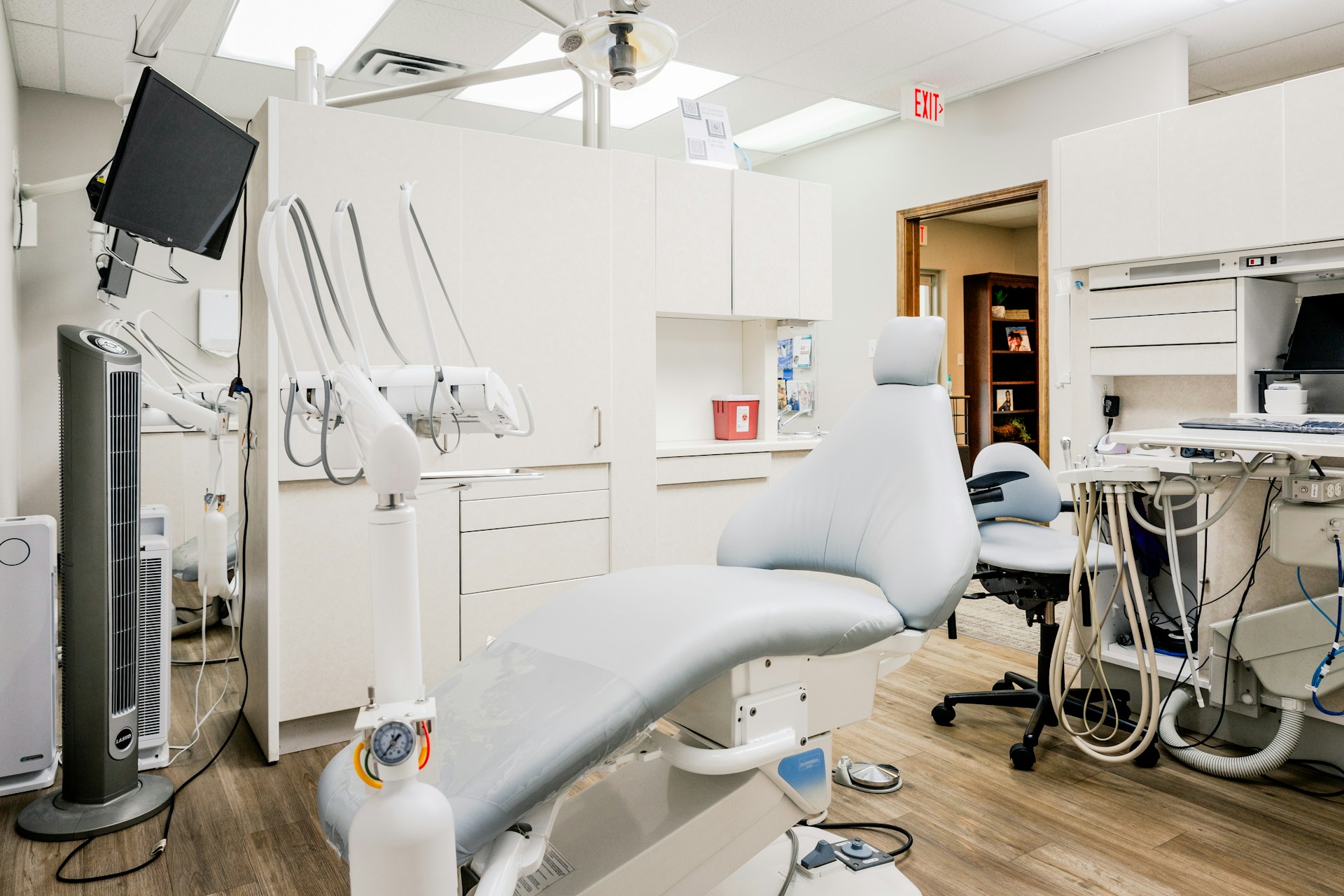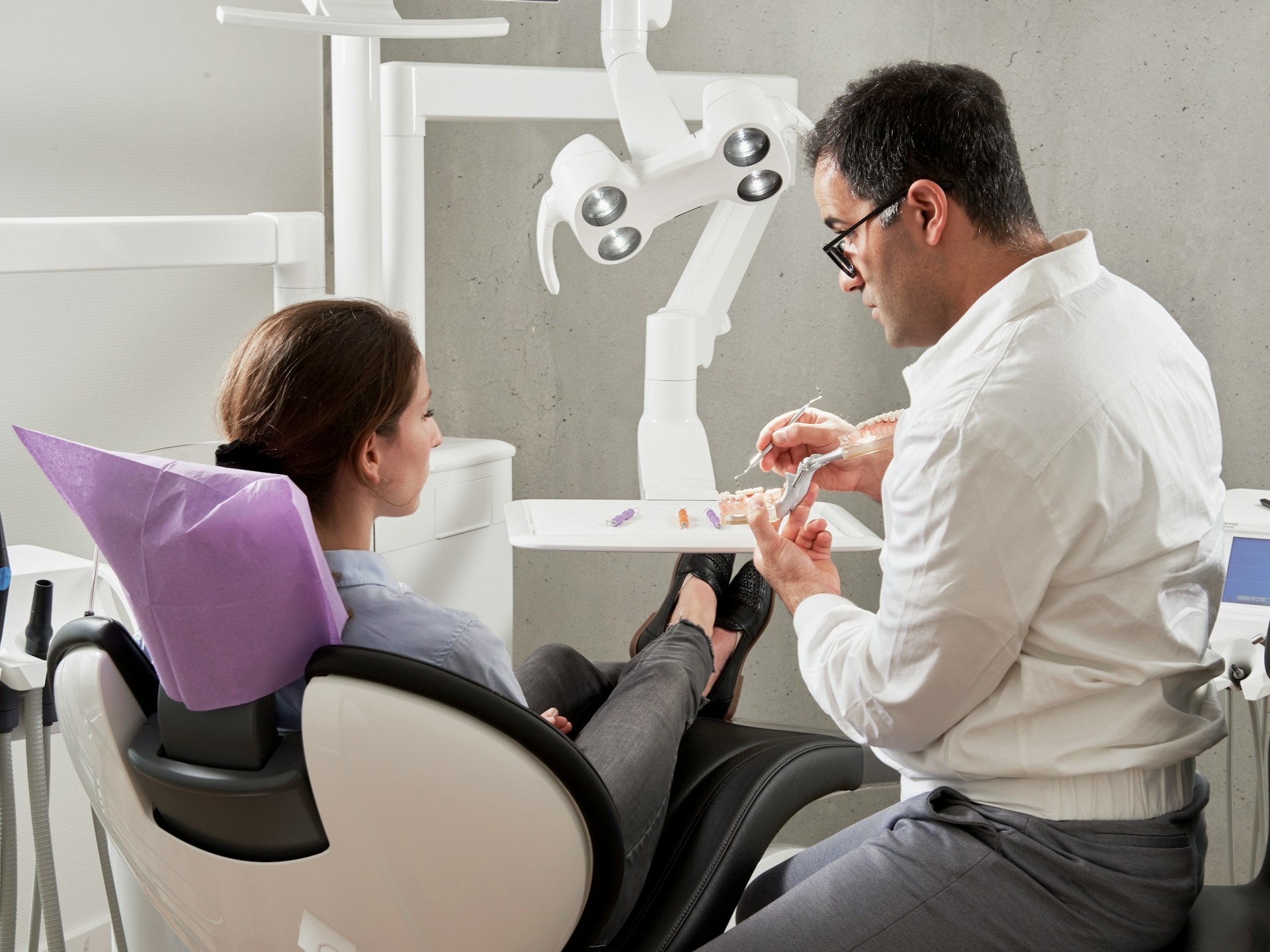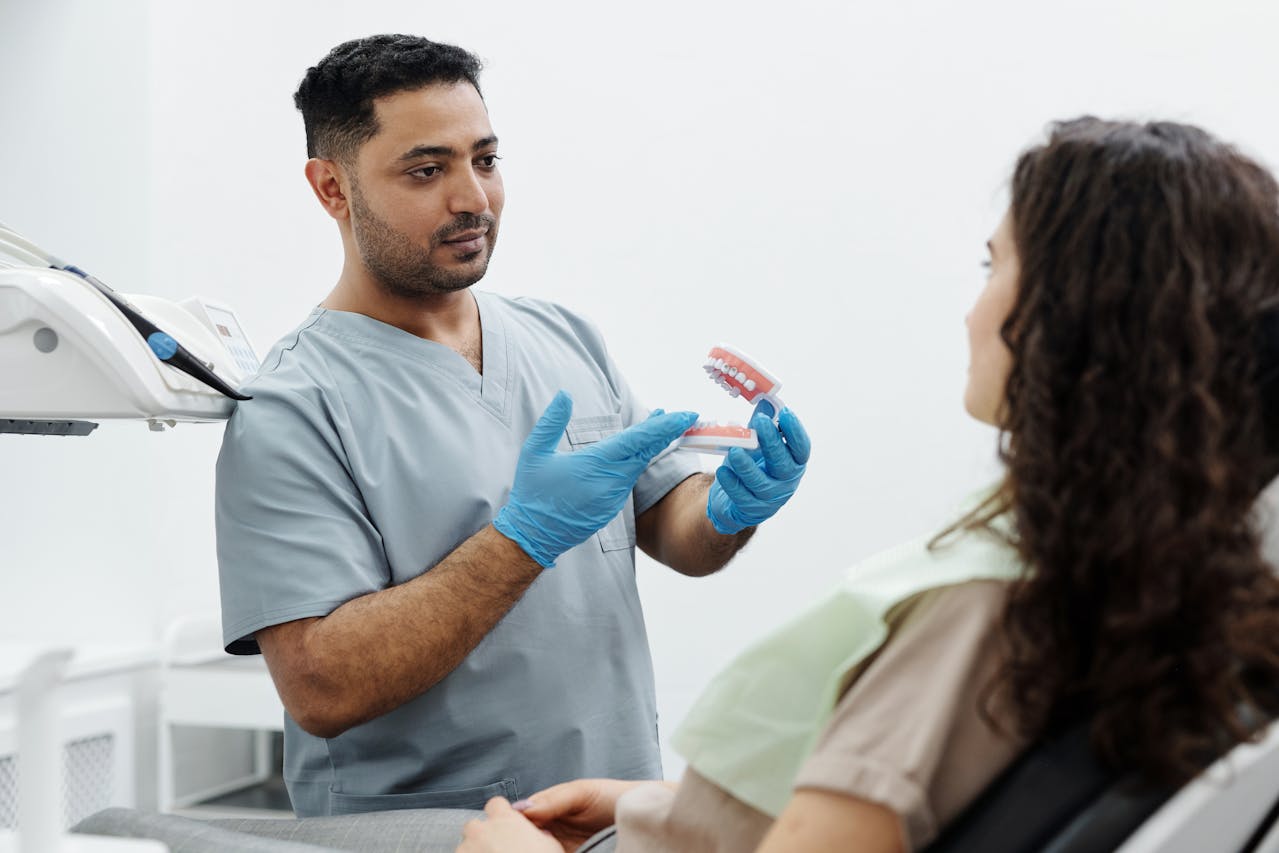Google Paid Ad Strategies For Dental Clinics In Connecticut

Connecticut's competitive dental market—serving 3,617,176 residents with more practices per capita than the national average—demands a strategic approach to Google Ads. With 82.8% of patients using search engines to find healthcare providers, paid search is no longer optional for practices seeking growth.
The right strategy can deliver a strong 300-500% ROI, but only if implemented correctly. Arini’s AI receptionist platform ensures every call from your Google Ads campaign converts into a booked appointment, capturing opportunities even after hours when staff aren't available.
Key Takeaways
- The CT market is dense with 3,211 residents per general dental practice (vs 3,673 U.S. avg) across 3.61M residents, leading to higher competition and CPCs.
- Expect $6.50–$9.75 CPC, target $175–$325 CPA, with $10k–$20k lifetime value per patient, giving 300–500% ROI.
- 82.8% of patients use search to find providers; add CT city/ZIP modifiers and negatives (jobs/education/free) to capture intent and cut waste.
- 35% of business traffic for dental offices comes from paid search, making landing page optimization critical for conversion.
- LSAs (launched Jan 2023 for dentists) are pay-per-lead, show reviews, and carry Google Screened—run alongside Search for control + top-of-page trust.
- Track calls, forms, and booked appointments via your PM system; use fast, mobile-first pages (mobile is 64% of traffic) with service-specific landing pages and clear CTAs; cover after-hours with a 24/7 AI receptionist to prevent missed-call leakage.
1. Account Setup and Conversion Tracking
Proper account structure and conversion tracking form the foundation of any successful Google Ads campaign. Without accurate tracking, you're essentially flying blind, unable to determine which keywords or ads drive actual patient appointments.
Campaign Architecture Best Practices:
- Separate Campaigns by Goal: Create distinct campaigns for new patient acquisition, specific high-value services (like implants or cosmetic dentistry), and emergency care. This allows for precise budget allocation and bid management.
- Tightly Themed Ad Groups: Within each campaign, organize ad groups around specific keyword themes. For example, your "Cosmetic Dentistry" campaign might have separate ad groups for "teeth whitening," "veneers," and "Invisalign."
- Consistent Naming Conventions: Use clear, descriptive names like "CT-Hartford_NewPatient_General" or "CT-NewHaven_Cosmetic_Veneers" to maintain organization as your account scales.
Essential Conversion Tracking Setup:
- Call Tracking: Implement call tracking using Google forwarding numbers or a third-party solution to measure phone call conversions. Since many dental patients prefer calling directly, this is critical for accurate ROI measurement.
- Form Submissions: Track appointment requests submitted through your website forms using Google Tag Manager or direct conversion code.
- Appointment Bookings: Integrate with your practice management system to track actual scheduled appointments, not just leads. This provides the most accurate ROI data.
Connecticut Consideration: Given Connecticut's higher median household income of $77,719, campaigns targeting premium services like cosmetic dentistry may yield higher ROI than in other markets, justifying separate campaign structures.
2. Strategic Budget Allocation and Bidding
Connecticut dental practices face CPCs ranging from $6.50-$9.75 for competitive keywords, making strategic budget allocation essential.
Budget Guidelines:
- Starting Budget: Begin with $500-$2,000 monthly, representing 5-10% of your annual gross revenue allocated to marketing.
- Distribution Strategy: Allocate 40-50% of the budget to general "dentist near me" searches, 30-40% to high-value procedures, and 10-20% to emergency dental keywords.
- New Patient Acquisition Cost: Expect to pay $175-$325 per new patient through Google Ads, which is justified by the typical $10,000-$20,000 lifetime patient value.
Bidding Strategies:
- Start Manual: Begin with manual CPC bidding to understand keyword performance before transitioning to automated strategies.
- Target CPA Bidding: Once you have sufficient conversion data (at least 15 conversions in 30 days), switch to Target CPA bidding, setting your target based on your acceptable acquisition cost.
- Enhanced CPC: For practices with limited conversion data, Enhanced CPC can help increase bids for clicks more likely to convert while maintaining control over your maximum CPC.
Connecticut Market Insight: Practices in competitive areas like Fairfield County may need to allocate 20-30% more budget than those in less competitive regions to maintain visibility.
3. Keyword Research and Selection
Effective keyword research targets patients with a genuine intent to book appointments, not just browse information.
High-Value Keyword Categories:
- Emergency Keywords: "Emergency dentist Hartford," "tooth pain dentist near me," "broken tooth dentist CT" – these have high intent and urgency.
- Procedure-Specific Keywords: "Dental implants New Haven," "Invisalign Stamford," "teeth whitening Manchester CT" – target patients seeking specific services.
- New Patient Keywords: "Best dentist near me," "top rated dentist Connecticut," "family dentist accepting new patients" – capture general new patient searches.
Negative Keyword Implementation:
- Job-Seeking Terms: Add negatives like "jobs," "careers," and "hiring" to avoid irrelevant clicks from job seekers.
- Educational Terms: Exclude "dental school," "how to become a dentist," "dental assistant training."
- Free/Discount Terms: Consider excluding "free," "discount," and "cheap" if these don't align with your practice positioning.
Connecticut-Specific Keywords: Incorporate location modifiers like "CT," specific city names (Hartford, New Haven, Stamford, Bridgeport), and neighborhood references relevant to your service area. With 46% of all Google searches seeking local information, geographic specificity is crucial.
4. Google Local Service Ads (LSAs) Integration
Local Services Ads became available to dentists in January 2023, offering a pay-per-lead model that appears above traditional paid search results.
LSA Advantages for Connecticut Practices:
- Google Screened Badge: Builds immediate trust with potential patients through Google's verification process.
- Pay-Per-Lead Model: You only pay for actual phone calls or messages from qualified patients, reducing risk compared to traditional PPC.
- Review Integration: LSAs prominently display your Google reviews, making reputation management essential for ad performance.
Qualification Requirements:
- Business Verification: Complete Google's business verification process.
- License Verification: Provide valid dental licenses for all practitioners listed.
- Background Checks: Pass Google's background check requirements.
- Insurance Documentation: Provide proof of business insurance.
Strategic Implementation: Run LSAs alongside traditional Search campaigns for maximum visibility. While LSAs build trust through verification, Search campaigns allow for more creative control and specific service messaging. Arini's Call Answering & Scheduling Module ensures 100% of LSA leads are answered 24/7, converting every pay-per-lead opportunity into a scheduled appointment without burdening staff.
5. Geographic Targeting Precision
Connecticut's varied market—from urban centers to rural communities—requires precise geographic targeting to maximize budget efficiency.
Targeting Strategies by Practice Type:
- Urban Practices (Hartford, New Haven, Stamford): Use tight radius targeting (5-10 miles) or specific zip codes to focus on your immediate service area, where competition is highest but patient density is greatest.
- Suburban Practices: Implement a 10-15 mile radius targeting to capture sufficient patient volume while maintaining relevance.
- Rural Practices: Consider broader geographic targeting, potentially including neighboring towns or counties identified as underserved areas like Tolland, Windham, and New London Counties.
Advanced Geographic Tactics:
- Competitor Targeting: Use geo-fencing to target areas around competitor practices, capturing patients actively visiting their locations.
- Exclusion Zones: Add location exclusions for areas outside your service radius or neighboring states if they generate irrelevant traffic.
- Bid Adjustments: Increase bids by 10-20% for high-performing zip codes or areas with higher conversion rates.
Connecticut Demographic Consideration: With a median age of 41.5 years, tailor messaging in age-relevant areas to emphasize services for aging populations like implants, dentures, and restorative work.
6. High-Converting Ad Copy and Extensions
Your ad copy must compel clicks while accurately representing your practice to maintain Quality Score and patient trust.
Ad Copy Best Practices:
- Match Search Intent: Align your headline with the user's search query (e.g., "Emergency Dentist in Hartford" for emergency searches).
- Highlight Unique Value Propositions: Emphasize what makes your practice different—same-day appointments, weekend hours, sedation options, or specific technology.
- Include Strong CTAs: Use action-oriented language like "Book Today," "Call Now," or "Schedule Your Consultation."
Essential Ad Extensions:
- Call Extensions: Display your phone number prominently in ads, enabling one-click calling from mobile devices.
- Location Extensions: Show your practice address and distance from the searcher's location.
- Sitelink Extensions: Link to specific service pages (e.g., "Emergency Care," "New Patient Special," "Cosmetic Dentistry").
- Callout Extensions: Highlight key benefits like "Accepting New Patients," "Same-Day Appointments," or "Most Insurance Accepted."
Compliance Note: Ensure all claims comply with Connecticut regulations and avoid making guarantees about treatment outcomes. Focus on verifiable facts about your practice rather than subjective claims.
7. Landing Page Optimization
35% of business traffic for dental offices comes from paid search, making landing page optimization critical for conversion.
Essential Landing Page Elements:
- Mobile Responsiveness: With 62.54% of global internet traffic from mobile devices, your landing pages must load quickly and function perfectly on smartphones.
- Clear Call-to-Action: Prominently display either a click-to-call button or a simple appointment form above the fold.
- Relevant Content: Ensure the landing page content matches your ad copy exactly to maintain message consistency and Quality Score.
- Trust Signals: Include patient testimonials, years in practice, provider credentials, and Google review ratings.
Conversion Optimization Tactics:
- Dedicated Service Pages: Create unique landing pages for each advertised service rather than sending all traffic to your homepage.
- Insurance Information: Clearly display accepted insurance plans, as this is a key consideration for Connecticut patients, given the higher insurance coverage rates.
- After-Hours Solution: Implement Arini's AI receptionist to handle calls and schedule appointments even when your office is closed, converting after-hours traffic that would otherwise be lost
Performance Metrics: Aim for landing pages that load in under 3 seconds and achieve the dental industry average conversion rate of 8.36%.
8. Performance Tracking and ROI Measurement
Measuring actual ROI—not just clicks or impressions—is essential for optimizing Google Ads performance.
Key Metrics to Track:
- Cost Per Appointment (CPA): Track the actual cost to acquire scheduled appointments, not just form submissions or calls.
- Show Rate: Monitor the percentage of scheduled appointments that actually show up, as this impacts true ROI.
- Revenue Per Click: Calculate the average revenue generated per ad click to determine overall campaign profitability.
- Quality Score: Monitor Quality Score for your keywords, as higher scores lead to lower CPCs and better ad positions.
Advanced Tracking Implementation:
- Call Attribution: Use call tracking to attribute phone conversions to specific campaigns, ad groups, and keywords.
- Practice Management Integration: Connect Google Ads data with your practice management system to track patient lifetime value from paid search traffic.
- Multi-Touch Attribution: Understand that patients may interact with multiple touchpoints before booking, giving appropriate credit to Google Ads in the conversion path.
Reporting Cadence: Review performance weekly for tactical adjustments and monthly for strategic decisions. Arini's Analytics & Notifications Module provides real-time tracking of call volume, booked appointments, and revenue impact metrics from Google Ads traffic, delivering the ROI visibility needed for data-driven decisions.
9. Avoiding Common Connecticut-Specific Mistakes
Connecticut's unique market conditions create specific pitfalls that can waste advertising budget if not addressed.
Critical Mistakes to Avoid:
- Ignoring After-Hours Calls: With 65% of high-intent searches resulting in ad clicks, missing calls outside business hours wastes significant ad spend. Arini eliminates this problem by answering 100% of calls 24/7.
- Overlooking Mobile Optimization: Failing to optimize for mobile users ignores the majority of searchers and damages Quality Score.
- Broad Match Keyword Overuse: Using broad match without negative keywords can drain budget on irrelevant searches like "dental school" or "dental assistant jobs."
- Inadequate Geographic Targeting: Targeting all of Connecticut when your practice only serves a 15-mile radius wastes budget on unconvertible traffic.
Regulatory Compliance Errors:
- Medicaid Marketing Violations: Providers must obtain prior DSS approval for materials targeting HUSKY/CTDHP members
- HIPAA Non-Compliance: Ensure all forms collecting patient information are secure and encrypted, with proper Business Associate Agreements in place with vendors.
Budget Management Errors: Starting with overly aggressive budgets without proper conversion tracking can waste 30-50% of spend on non-converting traffic. Begin conservatively and scale based on performance data.
Frequently Asked Questions
Q: How much should a Connecticut dental practice spend on Google Ads per month?
A: Most dental practices should allocate between 5% to 10% of their annual gross revenue toward total marketing, with Google Ads typically representing a significant portion of this budget. For a practice generating $750,000 annually, this translates to $37,500-$75,000 annual marketing budget, with $6,000-$24,000 potentially allocated to Google Ads, depending on other marketing channels and market competitiveness.
Q: What is the average cost-per-click for dental keywords in Connecticut?
A: Connecticut dental practices face average CPCs ranging from $6.50-$9.75 for competitive dental keywords, which is higher than the national average due to the state's competitive market with 3,211 residents per general dental practice (compared to the national average of 3,673).
Q: How do Google Local Service Ads differ from regular Google Ads for dentists?
A: Google Local Service Ads (LSAs) operate on a pay-per-lead model where you only pay for actual phone calls or messages from qualified patients, whereas traditional Google Ads charge per click regardless of whether the click converts. LSAs also feature a "Google Screened" verification badge and appear above traditional paid search results, but require passing background checks and maintaining high review ratings for optimal placement.
Q: What are the most important metrics to track for dental Google Ads campaigns?
A: The most critical metrics include cost per appointment (not just cost per lead), show rate (percentage of scheduled appointments that actually show up), revenue per click, and Quality Score. While clicks and impressions provide volume data, these conversion-focused metrics reveal true campaign profitability and ROI.
Q: How can dental practices reduce wasted ad spend from missed phone calls?
A: Implementing an AI receptionist like Arini that answers 100% of calls 24/7 ensures every call generated by Google Ads converts into a booked appointment, eliminating the single biggest source of wasted ad spend. This is particularly critical for after-hours traffic when traditional offices are closed but patients are actively searching for emergency or convenient care options.









